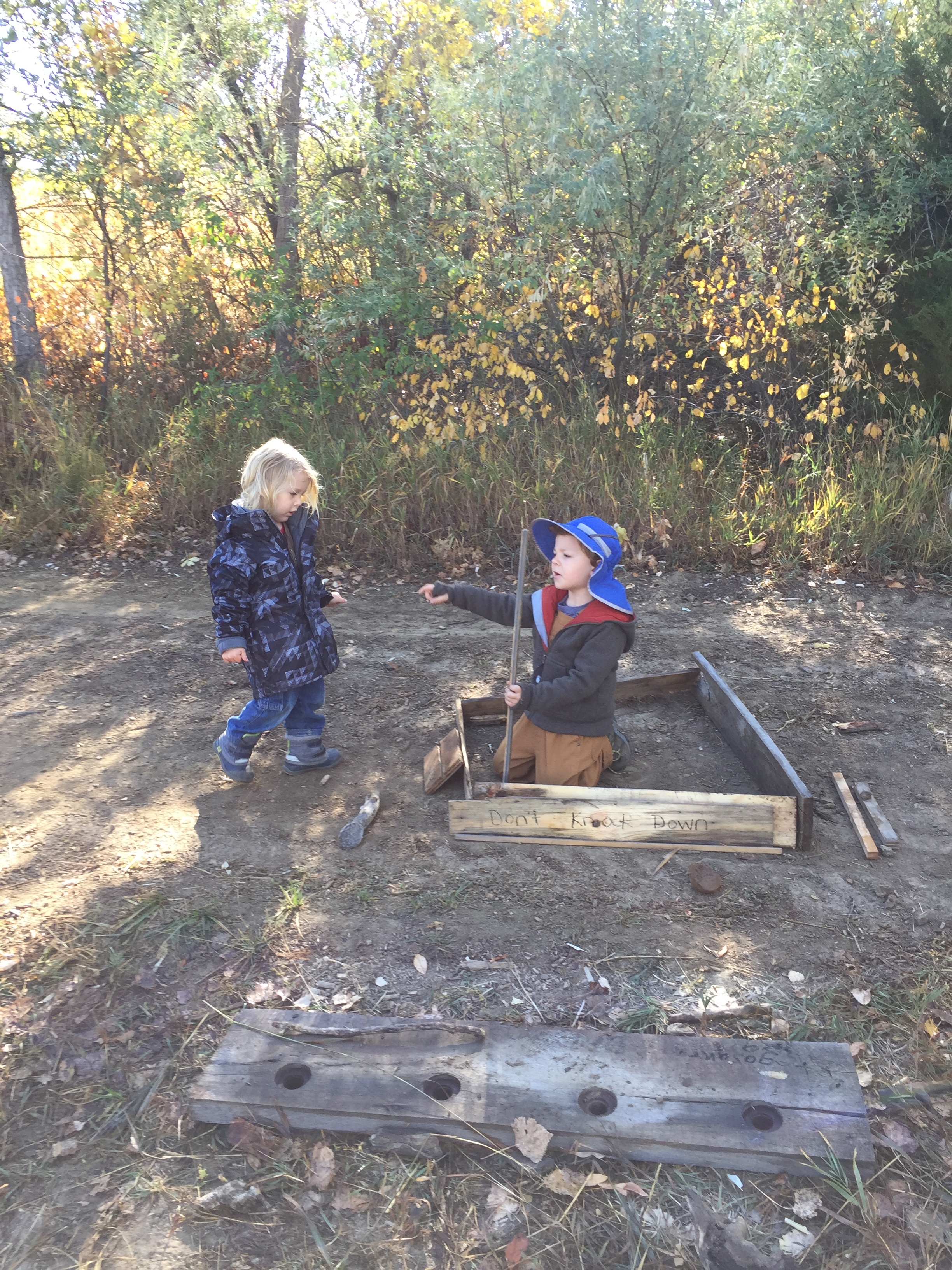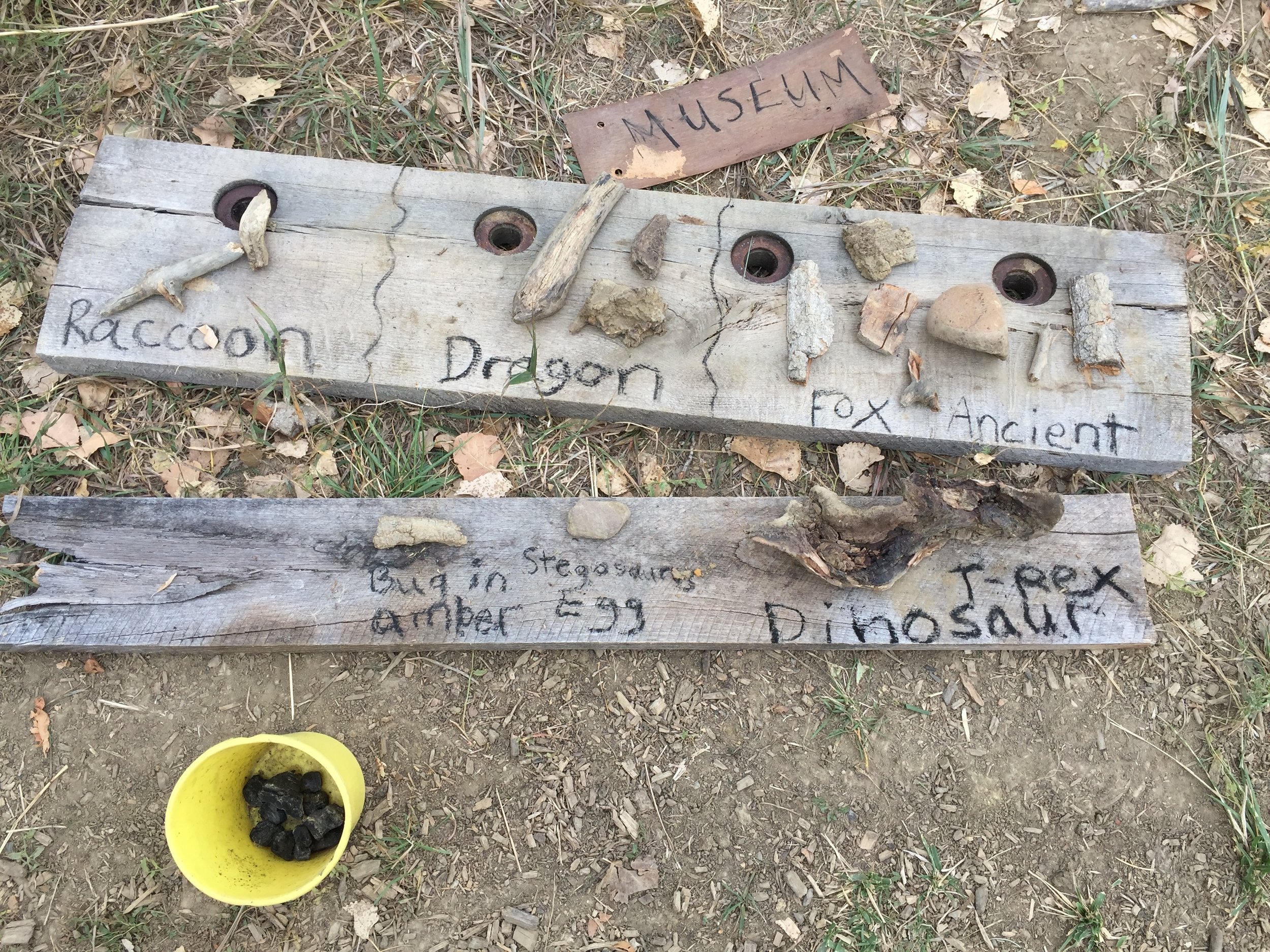October 9, 2018
Happy October! Didn’t fall arrive quickly this year? We certainly are feeling the energy and excitement that accompany the changing seasons. There is something about the crisp air that makes the kids extra playful. Maybe it is also a matter of them feeling more at home in the forest! The kids are now running full-speed through the forest, playing lots of chasing games. Pretending to be a forest animal (or sometimes a dragon) is great fun! If you listen closely to our Wee Folk at play, you may hear the calls of eagles, mountain lions, porcupine, and hawks. The kids enjoy embodying these creatures and making dens and nests to fit their current zoomorphism. So far, the real critters we have seen include deer, magpie, a skunk (smelled, not seen), voles, owls, hawks, and of course our dear crawdads.
Many of you know I (Keri) spent many years as a classroom teacher. What is so remarkable to me about our forest school is that the learning in the forest is so very authentic—difficult to nearly impossible to replicate in the classroom. My teacher-brain is simply amazed watching the kids delve into concepts that I used to try to re-create through indoor lesson plans. For example, preschool teachers often herald the changing of seasons by having children color a picture of a tree. At Wee Folk Forest School, the kids are experiencing every part of the changing seasons—not just the iconic leaf colors—but the crisp air, the vanishing insects, the dry flowers and seed pods, and other indescribable sensations. Our forest is our co-teacher, and it sure does a great job!
These dragons are on the chase, running after a mountain lion and some birds of prey. This game was invented by the children when they noticed that they could see their breath (hence the fire-breathing dragons)—they negotiated the rules and added extensions to the game, including a dragon trap.
The children continue to be engrossed in their woodworking projects, including the original bridge-building projects (which have been extended to include signs and guardrails) and catapults. During the past two weeks, a new child-initiated project has emerged: building garden beds! The kids are proud and amazed that they can make them stand up “with NO NAILS!” Once again, I can draw a parallel to an indoor preschool goal—at local STEM schools, pre-k students do a project where they “engineer” shapes from craft sticks. Here at the forest, it has happened naturally and was initiated by the children! The kids found planks approximately the same length and made right-angles to make a square or rectangular garden bed.
Working together—later these two plus another friend tilled their soil with sticks. The shorter sticks were easier to use, they reported.
Learning to care for one another is a big part of our mission—and we often see it in action. One child helped another plant a flower in a beautifully constructed garden bed!
Outdoors, there is so much to discover. Each day, something wonderful and new unfolds…like a dinosaur dig! What might look like a partially-buried rock to our adult eyes is actually a dinosaur bone. The kids rallied to find a way to dig it out. Since we purposely limit the pre-made tools and toys here, they had to get creative. Working together, they tried to use rocks and buckets to dig before agreeing that a strong stick works best. It took a lot of grit and hard work, but they did not give up and soon several fossils were excavated and ready to be put on display. A unique board with holes made the perfect museum, and I was a willing sign-maker as they dictated the labels for their exhibit!
Using a bucket to try to dig up a “fossil.”
The museum project—the children organized and displayed the items and told me what to write in order to create a labeled exhibit.
This paleontologist wanted to assemble a dinosaur skeleton after the museum project was complete. Fortunately, we enjoy the freedom and time to delve into their interests!
In addition to building, chasing each other, and digging, storytelling has become a staple at our forest. The children are sharing stories with each other. They may ask Ms. Jen or Ms. Keri to share the first story, and then they will each take a turn sharing and listening to each other. We teachers are so impressed by their ability to attend to each other’s stories. Sometimes one story will be so much fun that we will hear a “theme and variation” pattern, where each child changes the same story just slightly to make it their own! We also hear a mix of factual pieces from a family vacation, or fantasies of living with eagles and other wild beasts. This storytelling not only activates the children’s visualization of language, it helps them learn to sequence events, use interesting language, use story elements (setting, problem/solution, characters). It also builds their listening skills and stamina. These skills will help them in the future, when they are learning to read, write and pay attention at school.
Very respectful turn-taking: examining a jaw bone we discovered. What could it be from?
Enjoying a cup of cherry tea in the tipi! Sharing tea is one of our daily rituals.
We plan to begin introducing very basic whittling to the children. This will be done with safety as our utmost priority, starting with learning to peel soft bark from a stick with a potato peeler. We will be doing this in very small groups (1-2 kids at a time) and teaching them how to hold the stick firmly while moving the peeler away from their bodies. We will also be using safety gloves. Please feel free to ask us any questions!
Riding a horse together. Each child found a height they could climb on and saddle up!
As always, a huge thank you for sending the kids so well-dressed and allowing them to get dirty! Now that colder weather is here, it is a good idea to send extra socks and gloves, and even an extra pair of boots for those really wet days (full day kids).











